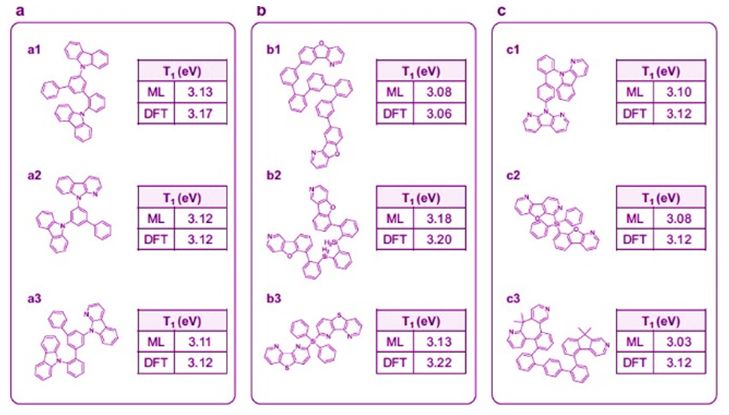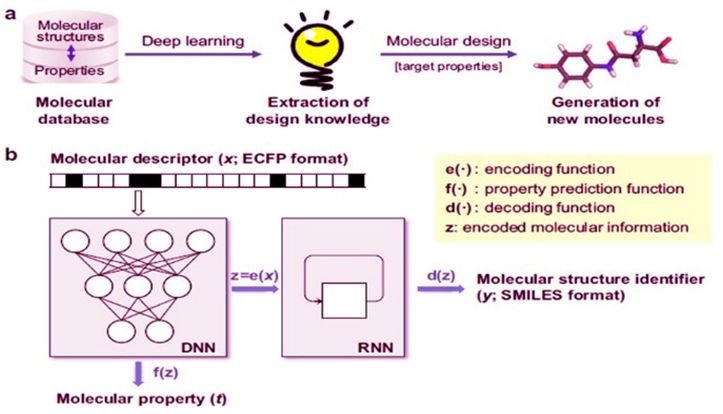npj: 有机光电子学—深度学习帮你设计出高效分子
海归学者发起的公益学术平台
分享信息,整合资源
交流学术,偶尔风月
高性能功能材料的发现对于克服现代工业中的技术问题至关重要。从实验和材料设计的角度看,人们对加速和促进材料发现过程作了广泛而大量的努力。机器学习辅助材料发现被广泛关注,是因其能为材料的有效探索提供合理指导,既能避免耗时的迭代又无需前人的知识积累。但如何实现完全数据驱动的机器学习和新材料发现,尚需探索。
来自韩国三星和成均馆大学的KyungdocKim及其同事,梦想着想要有什么属性的材料,只要告诉计算机,计算机就能帮他设计出所需的材料分子。为此,他们基于深度编码器-解码器架构的逆设计模型,由神经机器语言翻译的启发,开发了两种计算机算法,用于目标分子设计,两种计算方法能为同一设计目的而共同工作。第一种算法是深度神经网络编码器,能查看已知有机分子及其属性的数据库,提取分子结构与其材料性能之间的隐藏特征,找到描述结构/性能关系的抽象规则;第二种算法为递归神经网络解码器,能将提取的特征重建为具有目标性质的新分子结构。他们用其所构建的完全数据驱动方法,成功地从给定的数据库中学习了设计规则,并通过创建新的配体和组合规则,设计了能够吸收所需波长的分子,有希望实现高效、稳定的蓝光有机显示器材料。该技术可用于发现应用范围更广的相关全新分子和设计规则。
该文近期发表于npj Computational Materials 4: 67 (2018),英文标题与摘要如下,点击左下角“阅读原文”可以自由获取论文PDF。
Deep-learning-based inverse design model for intelligent discovery of organic molecules
Kyungdoc Kim, Seokho Kang, Jiho Yoo, Youngchun Kwon, Youngmin Nam, Dongseon Lee, Inkoo Kim, Youn-Suk Choi, Yongsik Jung, Sangmo Kim, Won-Joon Son, Jhunmo Son, Hyo Sug Lee, Sunghan Kim, Jaikwang Shin & Sungwoo Hwang
The discovery of high-performance functional materials is crucial for overcoming technical issues in modern industries. Extensive efforts have been devoted toward accelerating and facilitating this process, not only experimentally but also from the viewpoint of materials design. Recently, machine learning has attracted considerable attention, as it can provide rational guidelines for efficient material exploration without time-consuming iterations or prior human knowledge. In this regard, here we develop an inverse design model based on a deep encoder-decoder architecture for targeted molecular design. Inspired by neural machine language translation, the deep neural network encoder extracts hidden features between molecular structures and their material properties, while the recurrent neural network decoder reconstructs the extracted features into new molecular structures having the target properties. In material design tasks, the proposed fully data-driven methodology successfully learned design rules from the given databases and generated promising light-absorbing molecules and host materials for a phosphorescent organic light-emitting diode by creating new ligands and combinatorial rules.
扩展阅读
本文系网易新闻·网易号“各有态度”特色内容
媒体转载联系授权请看下方







